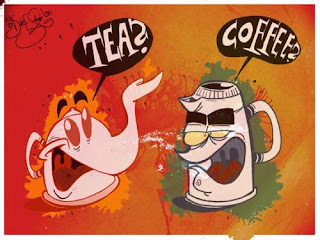Hi!!!
Today i have a useful information about
Hand, Foot, and Mouth Disease (HFMD) telling you to observe and protect your kid and yourselves.
Hand, foot, and mouth disease is a common childhood illness caused by a virus.
The illness most often occurs in the spring and fall and is most frequently seen
in young children, infants, and toddlers. It is characterized by fever and a
blister-like rash affecting the palms of the hands and soles of the feet along
with blisters inside the mouth. (It is unrelated to foot and mouth disease,
which affects livestock.)
this disease is generally caused by coxsackievirus A-16,
which is a member of the enterovirus family. There are other types of enteroviruses that can cause the symptoms as well, but these are less common.
Children usually become infected with the virus from other children in an
oral-fecal pattern; that is, infection is acquired from exposure to oral secretions (nasal discharge,
saliva, etc.) or to stool. The incubation period (time between exposure and
symptoms) is usually five days.
It usually occurs in the spring and fall seasons but
may occur at any time during the year. The initial symptoms include fever and
general malaise (poor appetite, aches and pains, etc.). These symptoms generally
last one to two days before a blister-like rash develops on the hands, feet, and in the
mouth. The rash initially appears as small red spots but then develops into
vesicles (blisters). The blisters may develop on the gums, inner cheeks, and
tongue, and patients may complain of mouth pain and a sore throat. These young
patients tend to drool and avoid swallowing and may refuse to drink or eat
because of the discomfort. Very young infants may even become dehydrated due to
the refusal to drink. Rarely, other more serious complications occur, including viral meningitis (aseptic meningitis) and encephalitis. The symptoms associated with these complications include high fever, headache, stiff neck, and back pain. If your child has any of these additional symptoms, you should seek medical attention. Any high fever in a very young infant should be evaluated by a health-care
practitioner. For older infants and children, as long as the child has adequate
oral intake, this particular illness can be managed comfortably at home.
There is no specific treatment for hand, foot, and mouth disease. Supportive
care, including fever management, and prevention of dehydration are the primary
goals. Occasionally, "magic mouthwash" is prescribed by the provider. This is a
mix of several oral liquid medications, generally including a topical anesthetic
and diphenhydramine (Benadryl). This is then applied to the mouth ulcers to decrease the pain
associated with the oral lesions, decrease the inflammatory response, and
encourage the affected infant to increase oral intake.
If your child's fever remains elevated despite appropriate fever-reducing
drugs, or if he/she develops any signs or symptoms of dehydration (dry skin and
mucous membranes, weight loss, persistent irritability, lethargy, or decreased
urine output), you should seek immediate medical attention. Obviously, when
concerned or in doubt, contact your child's health-care provider.
There is no vaccine; however, the illness is typically mild and self-limited,
and children generally cannot develop the illness twice. In addition, most
adults have persistent immunity and cannot become infected either.
Thanks for information from:
http://www.emedicinehealth.com/hand_foot_and_mouth_disease/page7_em.htm#hand_foot_and_mouth_disease_prevention_and_vaccines








